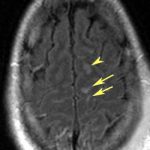Time for some philosophy again. A paper in Neurology released ahead of print confirms something I’m seeing more and more often. Specifically, hospitals can be bad for you, particularly if you are elderly.
The trauma population that we all see is aging with the overall population. Being older predisposes one to injuries that are more likely to require hospitalization. And unfortunately, being in the hospital can have adverse effects. I’m not just talking about the usual culprits such as medical errors or exposure to resistant bacteria.
The Chicago Health and Aging Project has been tracking a group of elders as they age, and has been making a number of interesting observations. Most recently, they have released information on a correlation between cognitive decline and hospitalization. They tracked nearly 1900 people, of whom 1335 ending up in the hospital for one reason or another (not just trauma). They found that there is a baseline rate of global cognitive decline with age (surprise!). Unfortunately, this rate of decline accelerated 2.4 times in the hospitalized group. Episodic memory scores declined 3.3 times faster, and executive function declined 1.7 times faster. And declines tended to be more pronounced in patients who had more severe illness, longer hospital stay, or advanced age.
There are some issues with the study. It is large, but it is a correlation study nonetheless. Are the effects due to something that happens in the hospital, or are they caused by something not evaluated by the study? It’s also not clear to me whether the declines noted are clinically significant in the daily lives of the people studied, or are just a number on some scale.
Bottom line: Some of the “benign” things that we do to patients in the hospital can have a big impact on their functional outcome. Always remember that they are more fragile than the young trauma patients we take care of. That extra fluid bolus, or dose of morphine, exposure to IV contrast, or noisy neighbor that keeps them from sleeping can make a real difference in how they do. Always consider that everything you do to them might kill them. Then seriously reconsider whether you really, really need to order it at all.
Related post:
Reference: Cognitive decline after hospitalization in a community population of older persons. Neurology, epub ahead of print, March 21, 2012.


